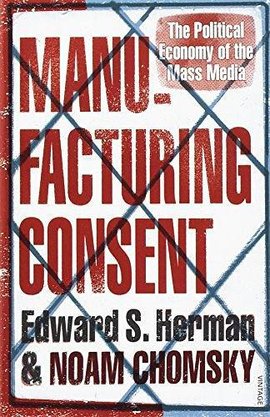The political economists Edward S. Herman and Noam Chomsky introduced the concept of “manufacturing consent” in their 1988 book of the same name. This phrase refers to the many ways in which mass media, such as newspapers, television, and other forms of communication, can influence and sway public opinion in favor of established political and economic interests.
In manufacturing consent, the authors Herman and Chomsky elaborate on the influential theory of the “propaganda model,” how the interest groups that control and finance the media – primarily government agencies, advertisers, corporations, and national news sources – produce daily news, through a wide range of detailed case studies in the field of international journalism. Two well-written scholars have shown the power of the “propaganda model” theory. The central content of this book is intended to explain the behavior of the American media at the level of basic organizational structure and organizational relations.
The author’s point of view is that in addition to traditional functions, the American media serves serves the propaganda work of the interest groups that control and provide strong financial support for them. These representatives all have important agendas and principles to follow, and all have the power to influence and limit media policies. This influence and limitation is not achieved through simple interference, but through the selection of people with the right ideas, and through the definition by editors and journalists of the first principles and news values that are in line with interest group policies. The two scholars pointed out that on the surface, the American mass media is independent and believes in “freedom”, but in essence, the “natural duty” of the mass media is to turn the values, beliefs, and codes of conduct of specific classes into “consent” through various events day after day, and integrate this “consent” into the whole society. The voices and opinions of those in power become the “consent” in the mass media, while the voices of the public and dissidents either disappear or are “marginalized.”
This is common in a world where wealth, power, and influence are unevenly distributed and there is intense class conflict. In terms of international news reporting, American media seem to instinctively and constantly pursue the objectivity and authenticity of news reporting and seem to transcend national boundaries and constantly defend the so-called “human rights” and “freedom” of all mankind, but in fact, American media’s international news reports without exception adhere to a constant principle – whether it is in line with the national interests, ideology, and values of the United States as the final selection criteria. Therefore, as an extension of this principle, American media will systematically adopt a “dichotomy” in terms of reporting techniques – valuable news and worthless news.”
References:
- Herman E S, Chomsky N. Manufacturing consent: The political economy of the mass media[M]. Random House, 2010.

